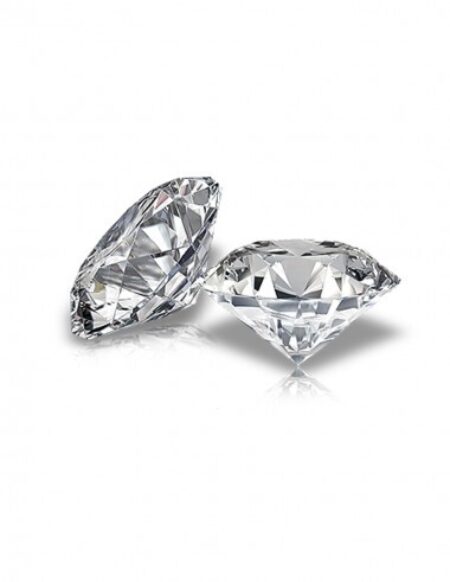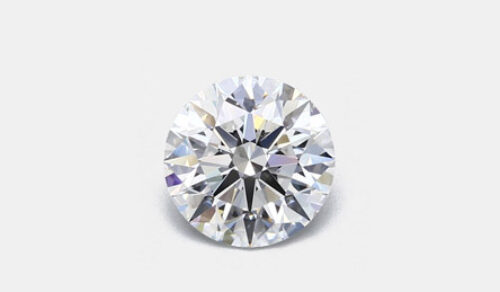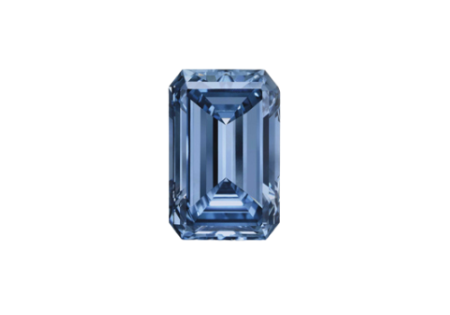If you want to invest in diamonds, you naturally want to be absolutely sure that the gemstones are actually worth what you are paying for them. One crucial aspect of this is knowing exactly where they came from. Unfortunately there is now an increased risk of you buying a synthetic diamond when you thought you were acquiring a natural one. How can you distinguish between the two, making sure you are paying the right price for the right quality?

Investing in diamonds: how to distinguish between synthetic and natural
19 Jul 21
- Synthetically developed diamonds have the same chemical, physical and optical characteristics as their natural counterparts.
- The technology behind artificial diamonds has quickly evolved since 1970. They have also been incorporated in jewellery since the mid-eighties.
- Nowadays it’s very difficult to distinguish between the natural and synthetic gemstones.
- The risk is that the synthetic versions are being mixed with the natural ones, without the buyer realising this is happening.
- We therefore recommend only investing in diamonds of which you are absolutely certain they are natural, via a certificate issued by the HRD, IGI or GIA, at an incredibly competitive price via BNT Diamonds.
History in a nutshell
Ever since the discovery that diamonds consist of pure carbon, back in 1797, people have tried to copy the much desired gemstone on several occasions. It wasn’t until around the end of the 19th century that a number of scientists thought they had been successful. But nobody could successfully repeat their experiments.
Researchers in the United States, Sweden and the Soviet Union started conducting more systematic research into how they could make diamonds themselves from the nineteen forties. The methods they used at the time still dominate the production of the synthetically designed diamond today, but we’ll talk about this in more detail later on.
It was Tracy Hall from the American General Electric who eventually produced a diamond for the first time himself at the end of 1953, in accordance with a procedure which could also be repeated. However, the largest diamond he produced was only 0.15mm in size and visually anything but perfect. So not suitable for jewellery. For the time being synthetic diamonds would only be produced for industrial applications, like lasers.

Synthetically developed diamonds in jewellery
Researchers at General Electric made a breakthrough in 1970. This was the first time they were able to produce diamonds of a quality and size which could be cut. After a week they managed to produce a diamond of approximately 5 mm, with a 1 carat weight. Still not particularly huge, but the technology was going to evolve quickly.
It became possible to produce commercially viable quantities of diamonds around the mid-eighties, which could be used in jewellery. The first were still quite small and were yellow to brown in colour. But the quality and sizes were definitely progressing: the synthetic stones were becoming increasingly more colourless. Nowadays it’s very difficult to distinguish between natural and synthetically developed diamonds and certainly no longer by a layman.
Production costs also started falling around the same time. With the direct result of an increasing number of companies daring to enter the market. In 2016 the business bank Morgan Stanley estimated that the artificial diamonds would represent 15% of the trade in small stones and 10% of the large stones by 2020. A study conducted in 2017 by the Gem and Jewellery Export Promotion Council, an organisation promoting the Indian gemstone and jewellery industry, revealed that a total of 4.2 million carat of synthetic diamonds had already been produced.
What are artificial diamonds?
Well, the punch line is: they are real diamonds. And by that we mean: they have the same chemical, physical and optical characteristics. They are just as hard and exist in all manner of different colours and sizes. They can also have as much ‘fire’, brilliance and clarity as natural diamonds, providing they have been professionally cut. The major difference is in the way they were produced.
Natural diamonds usually originate 150 to 250 km deep below the earth’s surface. The high pressure and temperature results in the carbon dissolving minerals there, in order for these to subsequently be replaced by diamonds. The process took many millennia. Most natural diamonds are an impressive 1 to 3.5 billion years old. Volcanoes brought them up to the surface dozens or even hundreds of millions of years ago.
Synthetic diamonds originated in laboratories, in line with various different methods, including the following two very well-known ones:

- High Pressure, High Temperature (HPHT): this method, also used by Tracy Hall, is still the most commonly used one. The manufacturer mimics the conditions in which a natural diamond is created in a printing press. First the metal is melted, at 1400 degrees Celsius and under high pressure. The substance will dissolve pure carbon, after which it precipitates on diamonds seeds and the gemstone is created.
- CVD (Chemical Vapour Deposition): the diamond is made in a vacuum chamber with this newer and much simpler technique, at more moderate temperatures and very low pressure. A mixture of hydrocarbon gas (eg methane) and hydrogen is heated up, which releases the last carbon atoms. These attach themselves to a square diamond plate.

It’s even possible to change their colour …
Even though HPHT diamonds are sometimes blue or almost colourless, most develop with a yellow or brown colour. Manufacturers use special treatments to significantly strengthen or largely remove the colour after the growth process. In case of the latter, the diamond will take on a colour of between D and Z. D stands for absolutely colourless and the gemstones are a pale yellow moving towards Z.
It’s even possible to change the colour. This would involve the diamond being irradiated and subsequently significantly heated. This will turn the diamond red, pink or green. Natural diamonds in those colours are incredibly expensive. There is therefore a real danger of large amounts of money being paid for these.
Diamond sector in action against mixing
This brings us to the problem of synthetic diamonds, which the American consultancy Bain & Company warned about in its 2016 Global Diamond Report. The warning was about the fact that these stones could be illegally mixed with the natural diamonds, without investors knowing anything about it.
The diamond sector wants to avoid this come what may. That’s why the Diamond Federation of Hong Kong launched the Natural Diamond Quality Assurance quality label in 2015. Many traders use this label to ensure they are not selling artificial diamonds.
At the same time, diamond manufacturers are releasing financial means to emphasise the authenticity and scarcity of natural diamonds with marketing campaigns, including the international Real is Rae campaign from 2017, with several frequently watched television commercials funded by the Diamond Producers Association.
The sector has also globally introduced blockchain technology. This is a new database system which an increasing number of companies now use to securely store data about their transactions. The information is stored in encrypted blocks in a large network of computers, without any centre.
Major diamond manufacturers like De Beers want to use this new technology to document each movement a diamond makes, making sure the gemstone is perfectly traceable, from the mine to the buyer. The London based Everledger registered more than 1.6 million diamonds last year in a blockchain. In the future this should allow you to look up all details in relation to a specific diamond you are interested in buying.
Crucial when investing in diamonds: how can you see the difference?
It’s incredibly important to only invest in diamonds with a certificate issued by these top three laboratories. This certificate doesn’t just clearly and consistently confirm the quality of the diamond, as described in this blog post about certification, it also differentiates between whether this involves a natural or a synthetic diamond.
The institutes have plenty of new technology at their disposal for this purpose, including M-Screen + at HRD Antwerp. This high-tech installation automatically screens and sorts round diamonds, with an incredible speed of three diamonds per second, or 80 to 100 carat per hour. This solution will also make the checking for synthetic stones affordable for smaller stones.
The HRD, GIA and IGI can also grade synthetic diamonds for you, but you will not be issued a specific certificate.

Investing in diamonds: enjoy peace of mind with BNT Diamonds
We keep things incredibly simple. You can only invest in diamonds which are 100% natural with us. In order to be sure of this fact, we arrange for every diamond to be checked by one of the three top laboratories and we only make our purchases from renowned diamond traders.
You will therefore only ever pay us the right amount for a guaranteed quality, without being faced with any financial surprises at a later stage because the diamond suddenly appears to be worth a great deal less. Plus you can rely on a maximum chance of a great return. Of course we are focussed on the price too, but not by making the diamonds ourselves, but as a result of our smart buy approach.
Start investing in natural diamonds today
Paying the right price for 100% natural quality means you will need to invest via one of our four investment options. Or contact our experts first, for objective advice.

